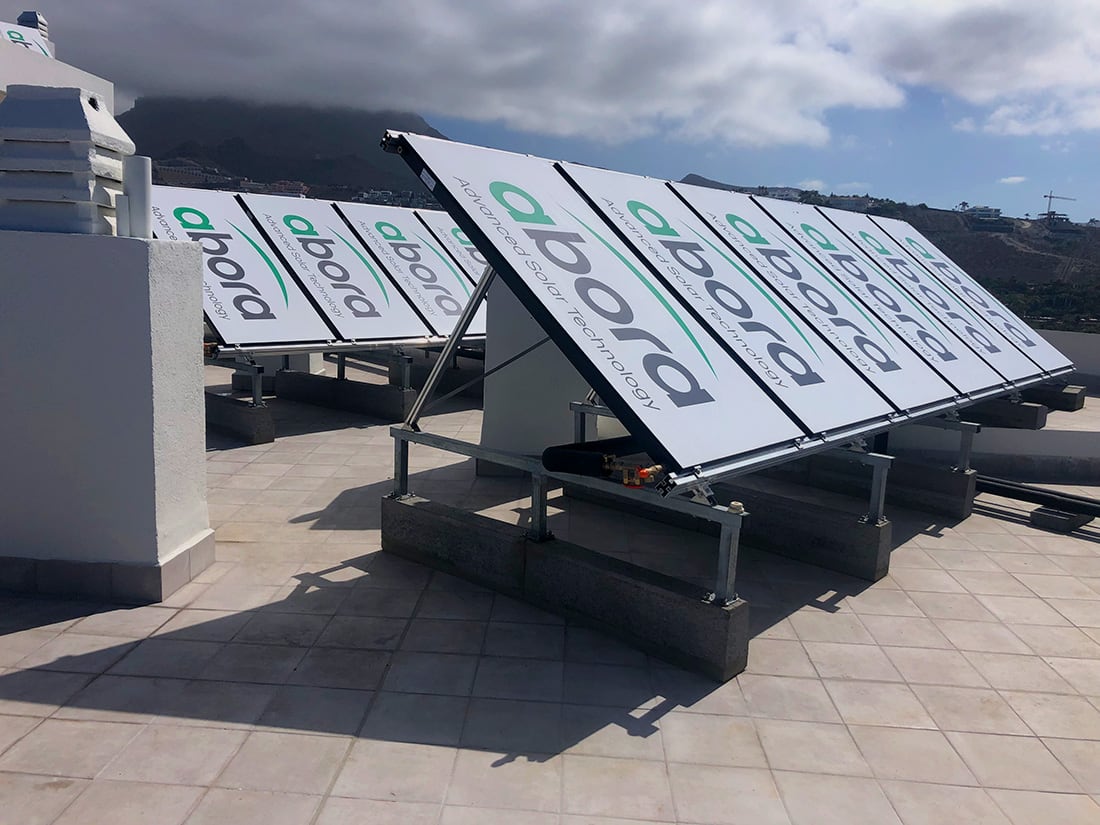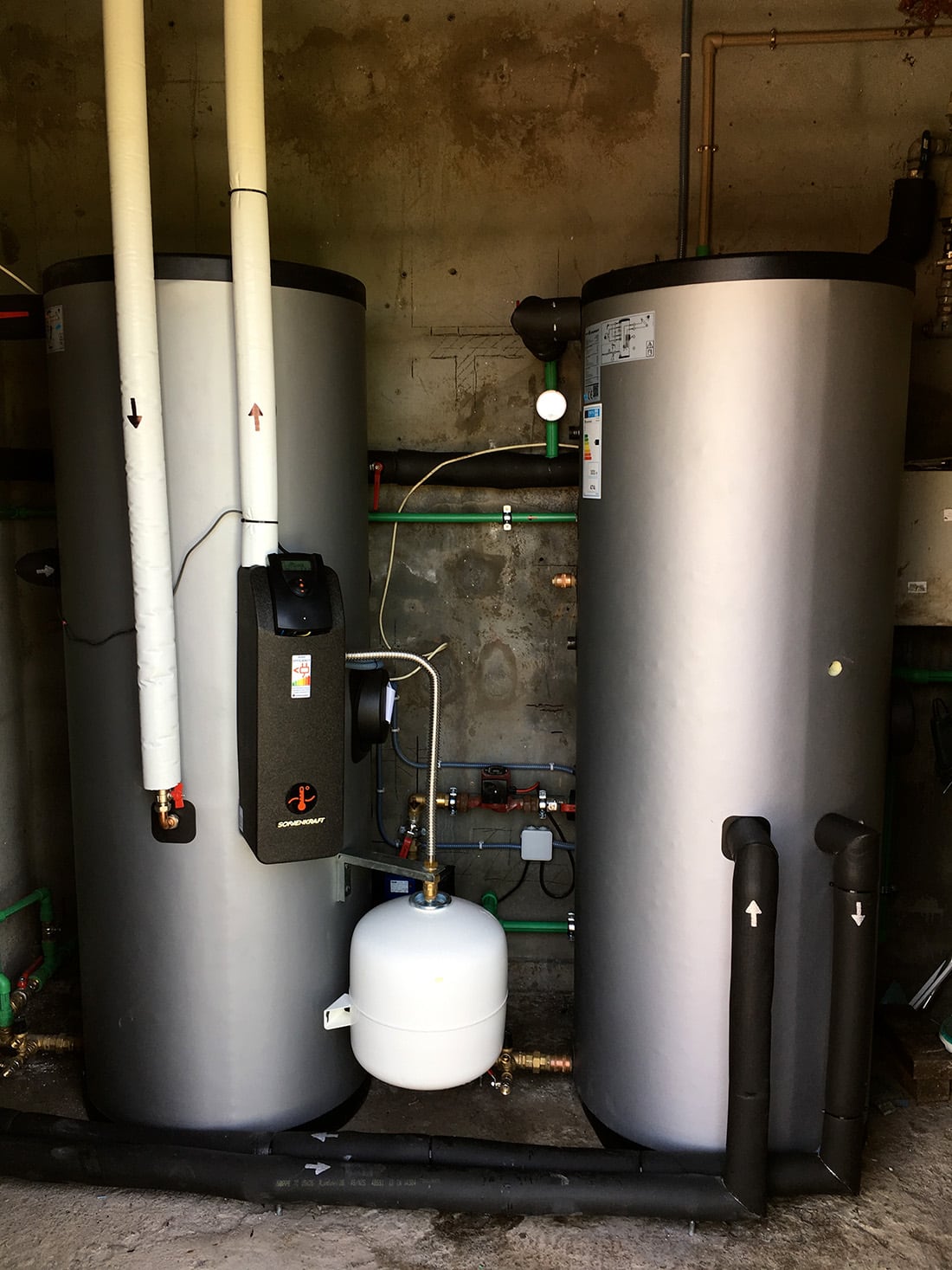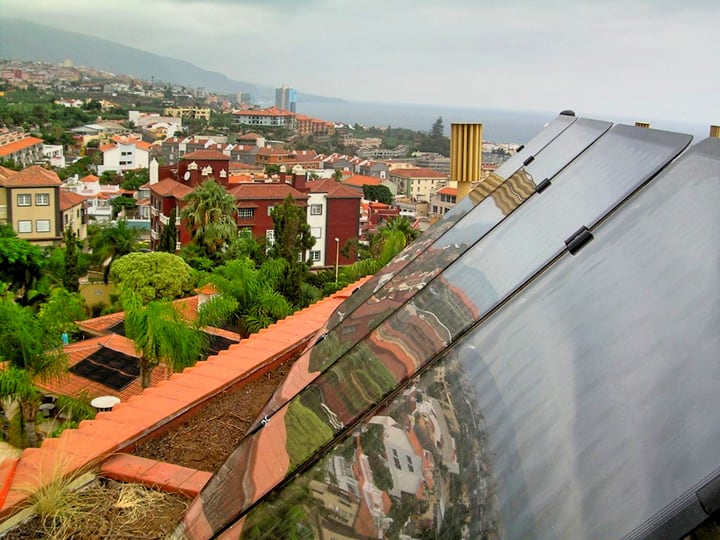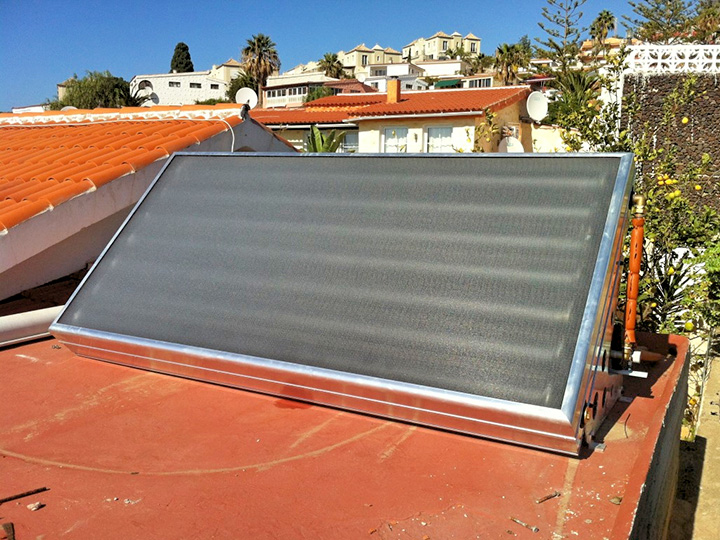This technology offers different solutions depending on the characteristics of the service required. We are specialized in thermosiphonic systems and in forced systems, for small and medium scale systems.
These systems serve small rural homes as well as bigger hotel establishments.
We use the most abundant energy in the world so that you can enjoy a pleasant shower, heat your home or heat your pool.
We do this so you don't have to buy conventional energy.
We do it to improve the environment.
The Canary Islands is the most favoured region in Europe to use this energy due to its latitude and the amount of hours of sunshine because of its climate. You can access this energy almost every day, for free, a privilege reserved for few.
The solar thermal systems we use can be classified into two categories: thermosiphonic systems and forced systems.
Thermosiphonic System
Its name is due to the thermosiphonic effect, which is the phenomenon on which the technology for moving heat is based.
It works as follows: The sun heats the collector, which is loaded with a heating fluid inside, as soon as the temperature begins to rise, the fluid begins to recirculate naturally to the tank, giving up its heat and heating the water. When this heat is released, it cools down and returns to the collector to be heated by the sun.
In order to make full use of this recirculation, the tank must be installed at least 30 cm above the collector. It is easy to understand: the heat always goes upwards, and therefore installing a tank further down leads to a partial loss of energy. The positive aspects of this system are its low cost, the simplicity of the installation, its high durability and the magnificent efficiency that it has demonstrated in our archipelago.


Forced System
These are systems in which the tank is installed at a lower level than the collector, so it can be on the roof or inside a garage. The recirculation of the heating fluid is carried out by a recirculation pump, which is activated by a differential control unit and two sensors.
The positive aspects of this system are of an aesthetic nature and the efficiency is approximately 40% higher than the thermosiphonic one. The forced circulation offers a higher efficiency than a natural circulation system.
These are modular systems, and therefore, they can be extended by taking advantage of the solar field for other uses, such as heating systems or heating a swimming pool.The initial investment is slightly higher and the system also uses energy to operate the pump. However, this energy use will be compensated by a higher production of hot water compared to the thermosiphonic system.
Other plant components
The function of the tank is to keep the hot wáter, produced by the solar panels, warm for a limited time, usually 1-2 days in the case of small systems. A good tank must favour the stratification of heat inside, have a high heating capacity, an adequate volume, respond quickly to demand, integrate well into the building, be economically accessible, safe, and have a long service life.
Recirculation pumps
These elements facilitate the transport of the heat transfer fluid from the collectors to storage and then to the consumption point. They are driven by an electric motor that supplies the fluid with the energy necessary to transport it through the circuit at a certain pressure.
Valves and other components
To prevent the antifreeze liquid from flowing in the opposite direction when the system is switched off, a one-way valve or a solenoid valve is fitted. This non-return valve prevents backward movement of the heat transfer fluid from the collector to the pump caused by natural convection.
Insulation
The insulation of collectors and pipes is necessary to reduce heat losses as much as possible and to maintain the temperature of the water heated by the sun. The heat loss factor is often an important factor to consider when choosing a collector or other


Saving and amortization
Good maintenance of the installation is essential to ensure its performance and the maximum use of solar energy, thus enabling it to achieve the longest possible service life.
Service
- Non-binding guaranteed study tailor-made systems
- Turnkey installations
- Advice and sales of thermosiphonic and forced equipment
- Development of projects
- Installation and maintenance
- Processing of grants









